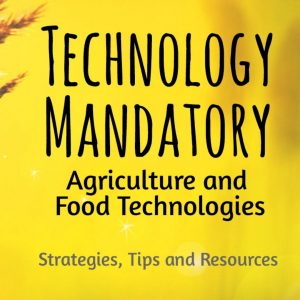Description
Follow Egg, Avo and Toast as they go on the ultimate adventure through the human body! This unique take on explaining the process of digestion is bound to stick in your students’ minds.
This fabulous resource can help give your students a better understanding of how food is digested. The PowerPoint tells the story of Egg, Avo and Toast’s adventure through the digestive system in a fun and engaging way. It breaks down the stages of the digestion, metabolism and absorption of nutrients and how the process differs for lipids, carbohydrates and proteins. Digestive terminology is used throughout the PowerPoint to ensure students learn the correct terms.
This resource also includes a worksheet for your students to complete after reading the story. They will answer questions based on the story using a variety of key terms. The glossary and definitions worksheet will challenge the students to recall the new terms they have learnt, while the recipe and evaluation will further reinforce their knowledge about the process of digestion. A lesson plan, plenary and teacher instructions are also included to make your life easier.
Pack includes:
- 15 slide PowerPoint
- 4 page PowerPoint worksheet and sample answers
- Glossary and definitions worksheet
- A recipe with an evaluation worksheet
- Lesson plan with a starter, plenary and teacher instructions
Relevant to
NSW Preliminary Food Technology
- digestion, absorption and metabolism
- describe the process of digestion, absorption and metabolism of food
NSW Years 7 – 10 Food Technology
Food Health and Selection
- describe the process of digestion, for example:
- metabolism
- absorption of nutrients
NSW Biology Stage 6
- trace the digestion of foods in a mammalian digestive system, including:
- physical digestion
- chemical digestion
- absorption of nutrients, minerals and water
- elimination of solid waste
NSW Science Years 7 – 10
Chemical World
CW3
- identify some examples of important chemical reactions that occur in living systems and involve energy transfer, including respiration and reactions involving acids such as occur during digestion (ACSSU179)
QLD Senior Biology
Topic 1: Homeostasis
Homeostasis
- understand that metabolism describes all of the chemical reactions involved in sustaining life and is either catabolic or anabolic
Topic 2: Mulitcellular organisms
Exchange of nutrients and waste
- describe the role of digestive enzymes (amylase, protease, lipase) in chemical digestion
ACT Food and Resource Management
Nutrition
- Overview of digestion and metabolism
SA Nutrition
Core Topic 1: The Fundamentals of Human Nutrition
- The digestion and metabolism of food influence the absorption and use of nutrients
2.1 How are foods digested and nutrients absorbed in the human body?
VCE Food Studies
Unit 3: Food in daily life
Key knowledge
- the microbiology of the intestinal tract and sequential processes of the digestion of carbohydrates, protein and fats, including enzymatic hydrolysis, absorption and utilisation of these macronutrients in the body
Key Skills
- explain the physiology of eating and digesting, and the absorption and utilisation of macronutrients
WA Food Science and Technology
Unit 4 – The future of food
- digestion of macronutrients
- digestive tract
- associated organs of digestion
- mechanical digestion
- chemical digestion
WA Human Biology Year 11
Unit 1 – The functioning human body
Metabolism
- biochemical processes, including anabolic and catabolic reactions in the cell, are controlled in the presence of specific enzymes
- for efficient metabolism, cells require oxygen and nutrients, including carbohydrates, proteins, lipids, vitamins and minerals
Digestive system
- the supply of nutrients in a form that can be used in cells is facilitated by the structure and function of the digestive system at the cell, tissue and organ levels
- digestion involves the breakdown of large molecules to smaller onces by mechanical digestion (teeth, bile and peristalsis) and chemical digestion (by enzymes with distinctive operating conditions and functions that are located in different sections of the digestive system)
- the salivary glands, pancreas, liver and gall bladder produce or store secretions which aid the processes of digestion
- absorption requires nutrients to be in a form that can cross cell membranes into the blood or lymph and occurs at different locations, including the small intestine and large intestine
- elimination removes undigested materials and some metabolic wastes from the body
TAS Biology
Organisms (Criterion 7)
- The principles involved in the following processes in vertebrates and plants (dicots only), with reference to the relationship between structure and function:
- Digestion and absorption
- physical and chemical digestion (including a variety of diets)
TAS Life Sciences
Multicellular Organisms (Introductory level)
- Animals
- Transport of materials (nutrients and wastes)
Human Systems
- Digestive, circulatory and respiratory (expansion of the work covered in the core)
Chemical Reactions for Life
- Life would not be sustained without enzymes (e.g. digestion)
Only logged in customers who have purchased this product may leave a review.







 The Happiness Mission
The Happiness Mission











Kendall BRIGGS (Verified user) –
Fantastic graphics with supporting content relating to digestion.
Alison M. (Verified user) –